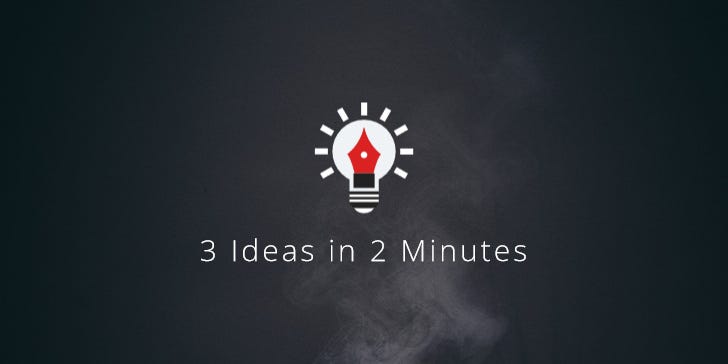#221: Hitchens' Razor, Evidence of Absence & the Method of Absolute Evidence
3 Ideas in 2 Minutes on Evidence and Its Absence
I. Hitchens' Razor
What can be asserted without evidence can also be dismissed without evidence.
Aliens live among us. There’s an invisible dragon in my garage that doesn’t make a sound. Friends is better than Seinfeld. When we’re confronted with claims that lack explanations and supporting evidence, Hitchens’ Razor can make our lives easier. It’s of course named after the late British-American author and contrarian Christopher Hitchens.
Why waste energy on speculating and disproving assertions if those who make them have nothing to offer in their favour? You’re under no obligation to take it seriously and can, in turn, dismiss it out of hand. Because the burden of proof lies with the person who makes a claim, not the one it’s thrown at.
👉 Taken from my article on 11 Philosophical Razors to Simplify Your Life
II. Evidence of Absence
On the flipside, famed Science communicator Carl Sagan is often quoted with the line:
Absence of evidence is not evidence of absence.
What he meant is subtle but important: just because we don’t have proof that something exists doesn’t automatically mean it doesn’t exist. In other words, failing to detect something isn’t the same as proving it’s not present.
Sagan often used this line in the context of scientific reasoning and scepticism. Careful, though, this principle only applies when something could, in principle, leave evidence, but we haven’t found it yet. Such as extraterrestrial life. So it doesn’t contradict his famous analogy about the supposedly invisible, incorporeal and coincidentally entirely undetectable fire-breathing dragon living in his garage.
The goal is to find a balance between scepticism and openness.
III. Method of Absolute Evidence
No evidence? No problem! The Method of Absolute Evidence is a propaganda technique that doesn’t attempt to prove a claim directly. Instead, it presents the idea as obvious, self-evident and universally accepted. This creates the impression that it’s supported by an overwhelming majority. Absolutely and unconditionally.
It works by exploiting the human tendency to trust widely accepted “truths” and authority figures and comply with their demands. Through confident presentation, repetition and selective evidence, the audience is led to accept the claim without critical examination.
What do you mean you don’t believe Carl Sagan had an actual incorporeal dragon in his garage? Are you really this naive and uneducated? He won the Pulitzer Prize! Why would he and all the other smart people lie about that? Besides, the internet is full of expert-verified photos of his invisible dragon. And here’s a 1998 scientific study I forged that proves his claim once and for all. This has long been settled. 🐘
👉 In even more thrilling news, the YouTube channel After Skool has turned my long-form article on Cobra Effects into a wonderful narrated animation. Check out The Cobra Effect: How Good Intentions Lead to Bad Outcomes.
Have a great week,
Chris
themindcollection.com

